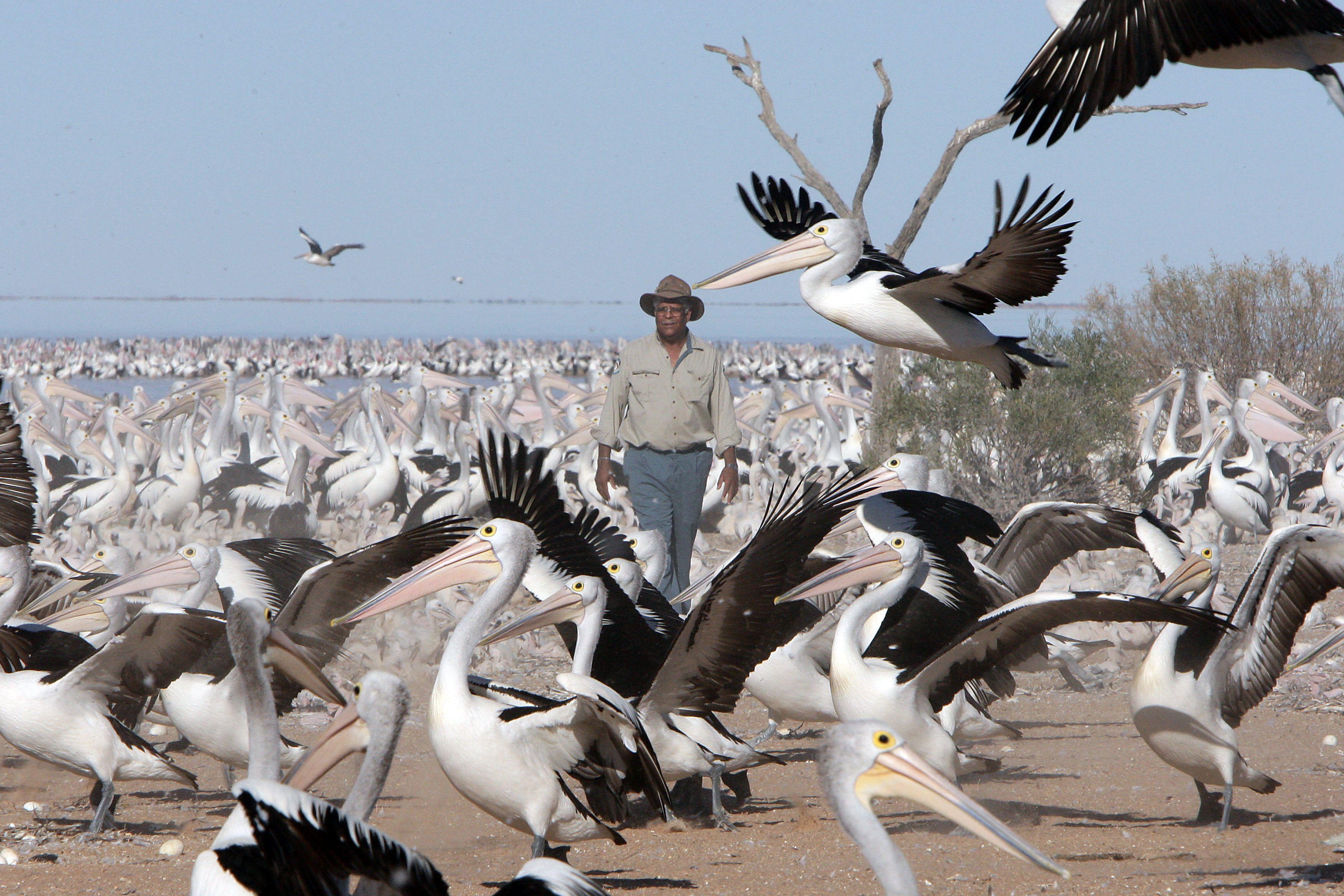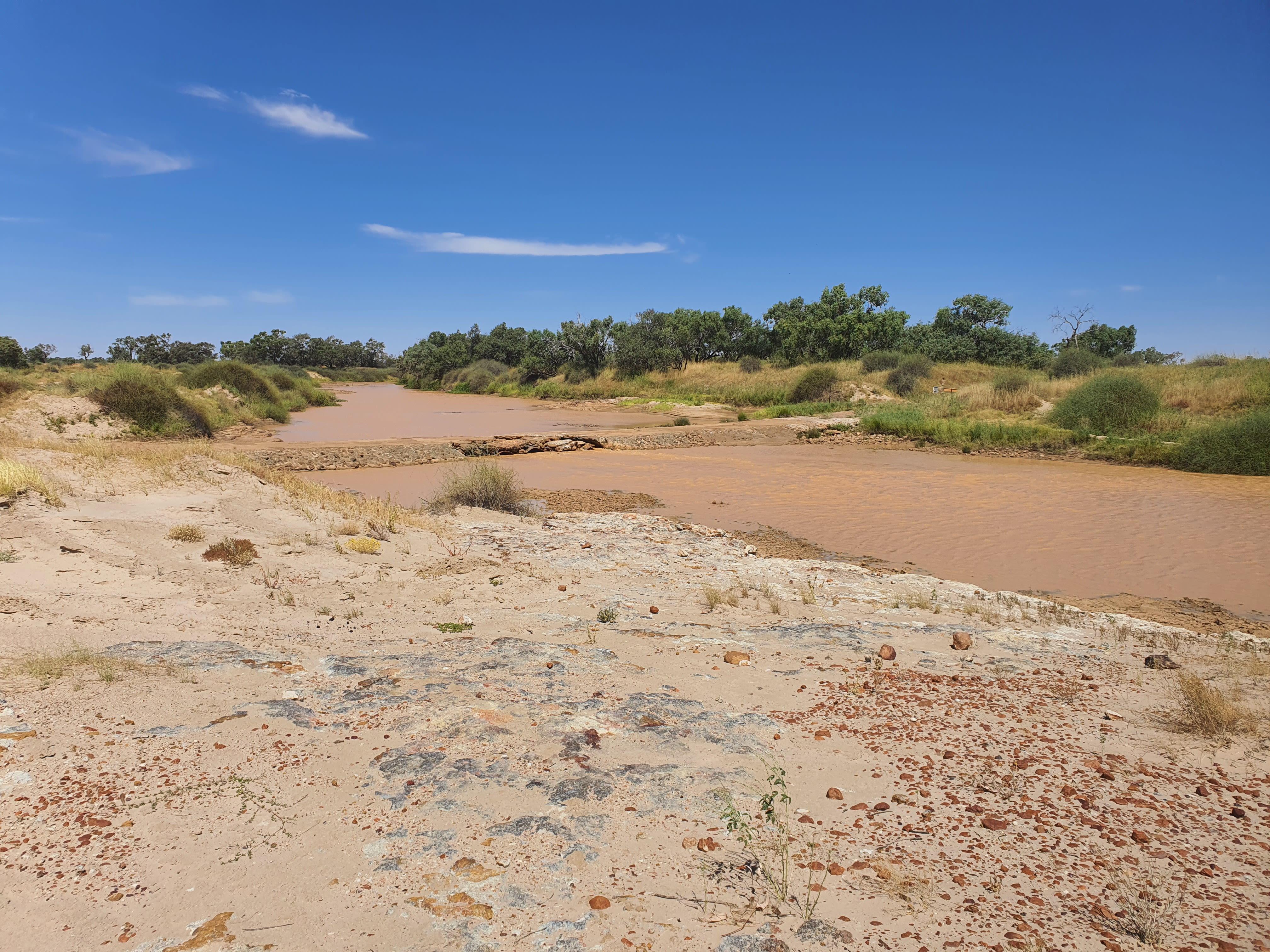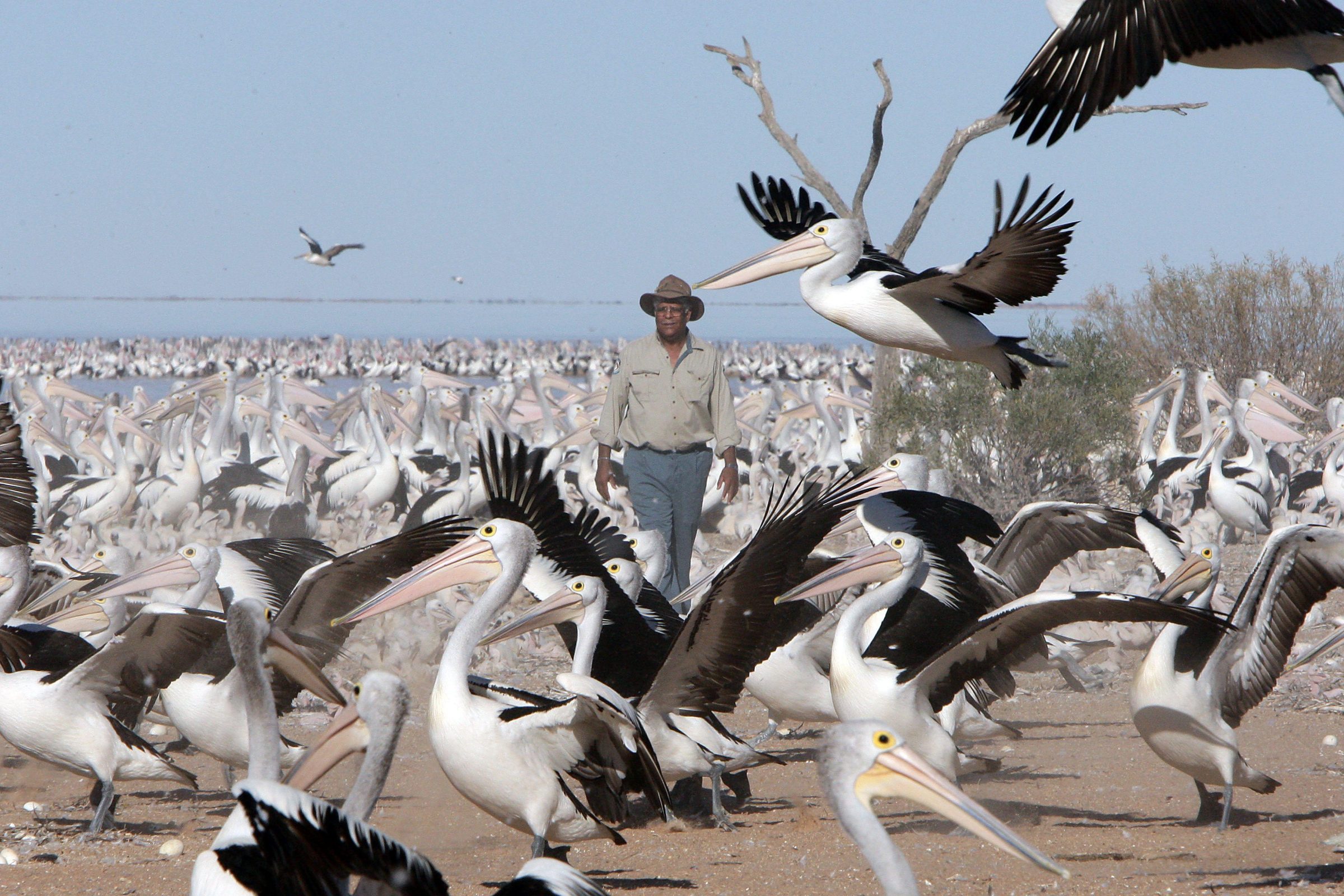Don Rowlands, a Wangkangurru Yarluyandi elder and Queensland Parks and Wildlife Service Ranger, discusses what it’s like when the rains come to his traditional lands in the dynamic landscape of Channel Country.
Words by Don Rowlands, interviewed by Dan Down. First published in The Wilderness Society Journal.
I live up in Birdsville, Queensland, the capital of Australia. It’s not very green and lush now despite the rain; it’s quite dry. Hot weather comes along and destroys a lot of the green stuff.
I work for the Queensland Parks and Wildlife Service and have been for over 30 years. My territory is the Munga-Thirri National Park in Queensland. I’m also a Traditional Owner for Country right across to Dalhousie Springs-Witjira National Park, and the newly renamed parks in South Australia including the Munga-Thirri Conservation Park. This country all belongs to the Wangkangurru people.

I love getting up in the morning and putting my uniform on. The uniform means a lot to me. It gives me identity and it gives me the opportunity to look after Munga-Thirri National Park, which is my Country. It’s a real privilege to care for Country which is your traditional lands.
We are struggling with being able to use Traditional Knowledge to care for Country, simply because Wangkangurru people are a bit thin on the ground. And people work, so it’s hard to take people away from their jobs. So for the most part, it’s just been myself and Don, and Don being me. But I love having a chat with people, visitors who come through here, and pass on a bit of Knowledge; talk to them about Country by a campfire.
The rains coming out here are very important, it’s part of the natural world and our people would depend on periodic floods.
My grandfather Watti Watti was the “ritual” leader of the fish increase. His job was to ensure that the fish were always at capacity in the waterholes. In the droughts, all our mob would come to the waterholes and live there for the duration of the drought. And of course, eat all the fish. It was Watti Wattie’s job to keep them full. This is how he did it: once the floods came he would target waterholes away from the main river. When the waters receded, he would send the people in there and they would catch all the little fish left in the waterholes, put them in their baskets and take them down to the main fish holes and replenish them. So that was his job, he was the fish increase boss.
There’s knowledge of times like this that I don’t want to be the sole holder of, or it will be lost forever. There are Songlines and stories that we need to record, not later but now! There are lots of artefacts, fire places, stone tools, stick humpies [shelters] still standing, and special places like wells and burial grounds in the deserts here. It needs to be catalogued so the knowledge of our people is around for future generations. I am planning an expedition with specialists to do just this.
The Wangkangurru Country starts up above Birdsville and works its way all the way down to the top end of Lake Eyre. When the rains come the sky fills with birds. You look up and you see pelicans floating around looking for a way to go, and they’re very clever animals. I wish I knew how they operated. Somebody asked me one day, ‘How do you think the pelicans know when to come out to this country and when and where to nest?’ And my answer was, ‘That’s a question for the old people.’ I believe the old people and the natural world were one. So we’ve lost that information. But it’s quite intriguing to watch the pelicans and how they form these lines flying somewhere. And when you find them, there they all are nesting on the islands.

This is Channel Country—the water systems look like these fingers, a big hand and big fingers. And each finger is unique to itself, and some got waterholes and some don’t. There’s a lot of cattle country. I’ve worked on all the big cattle stations and riding your horse through there you must be very careful.
“Seeing the birds come with the rains is wonderful”
Seeing the birds come with the rains is wonderful and I just hope that we never ever get to a point where we’ll lose too many more animals from the natural world out here.
I have noticed that a lot of animals are not coming back to where they’d been when I was a kid growing up around Birdsville. We were able to live off the land. We didn’t really eat the modern tucker, we would spend most of our time down the river, just run around and eat as we went. Yabbies, fish, snakes, seeds; all sorts of things. We were very content every day. We’d go to bed at night on a full belly. Right now you wouldn’t survive a day here.
The 1970s were the time of the big floods, which did some damage to the water courses. But through the 70s, the animals—anything and everything—were everywhere. There were snakes all through that Country, there were thousands of snakes. The woma snake, for instance, he was everywhere here; look at the sand dunes and he’d be lying in the sun behind the cane grass. But I haven’t seen one for years.
On the flipside, when you see a big heap of wading ducks and corellas and galahs even, it’s quite pleasing to see that some species are still thriving.
The loss of wildlife is probably due to a little bit of everything. One of the big problems is cats and other ferals taking out so many little birds each night. It’s just unbelievable. I sometimes go out with the wildlife rangers and do some cat shooting. Sometimes we have a good success rate, sometimes maybe just one or two. Everything counts though, of course.
You’ve got to look after Country and it will look after you.

